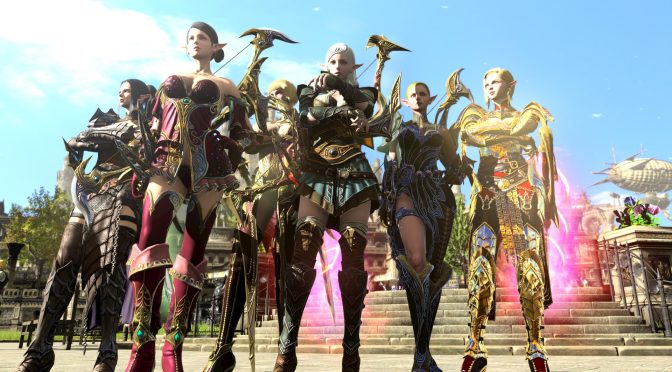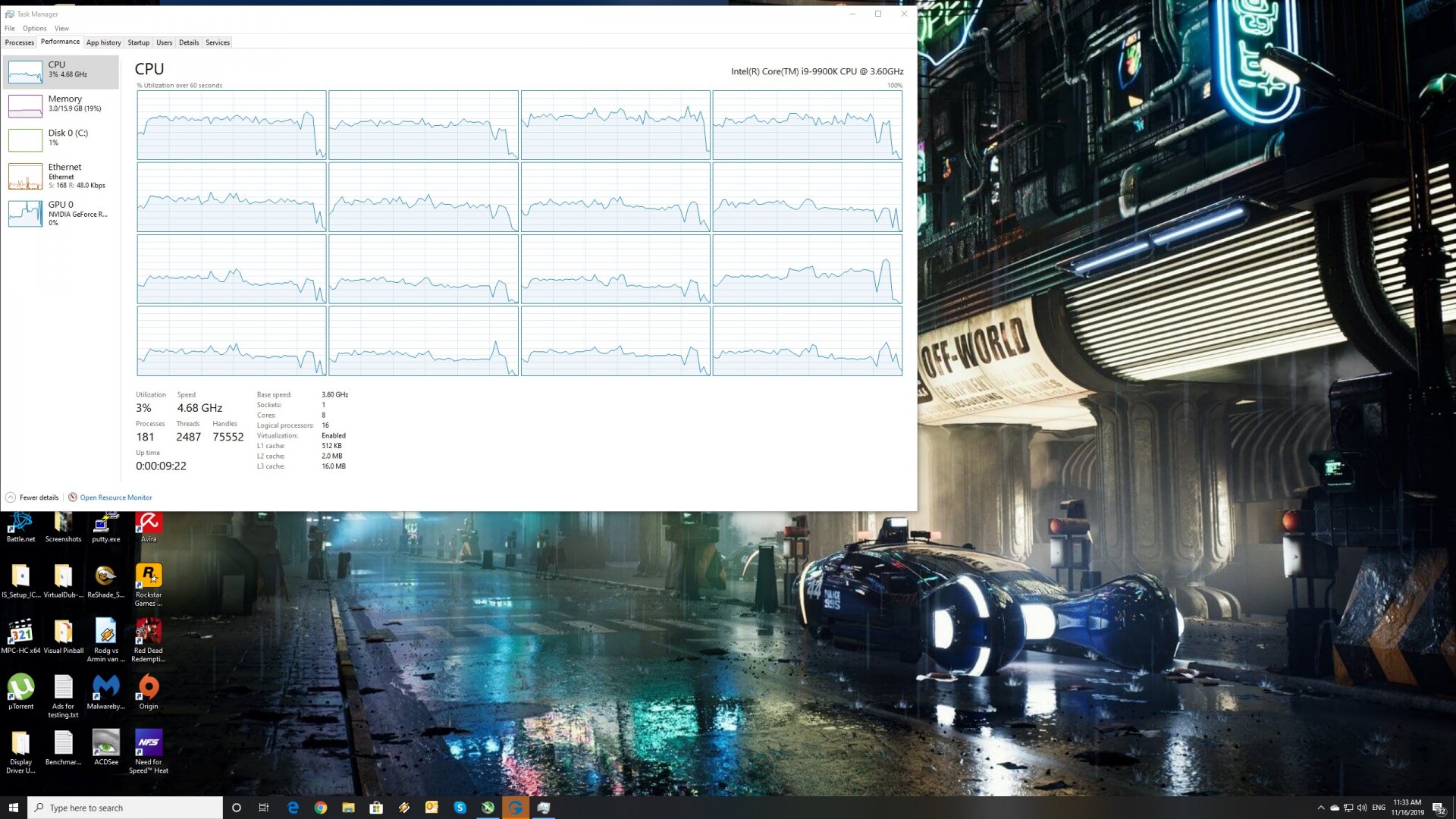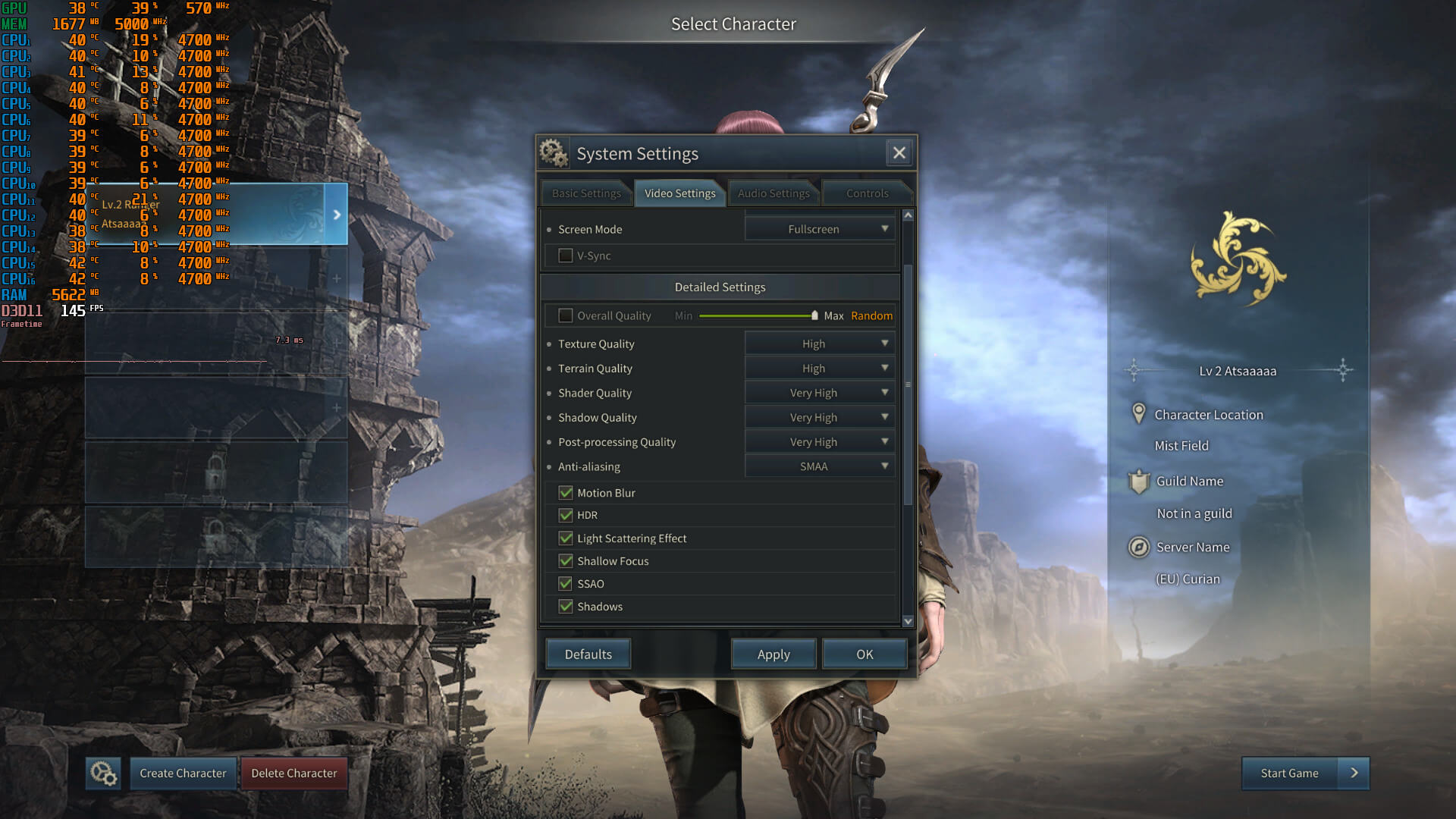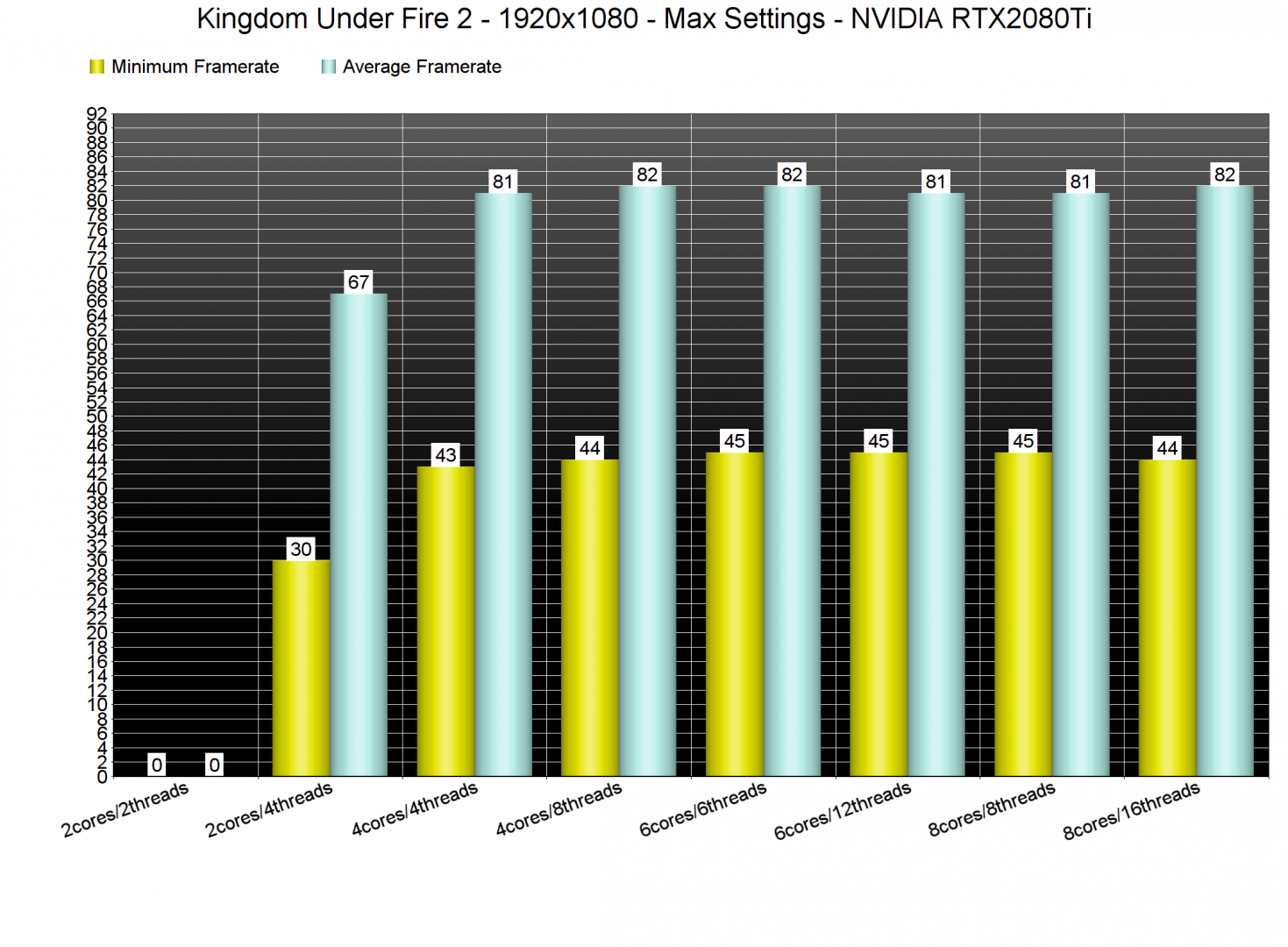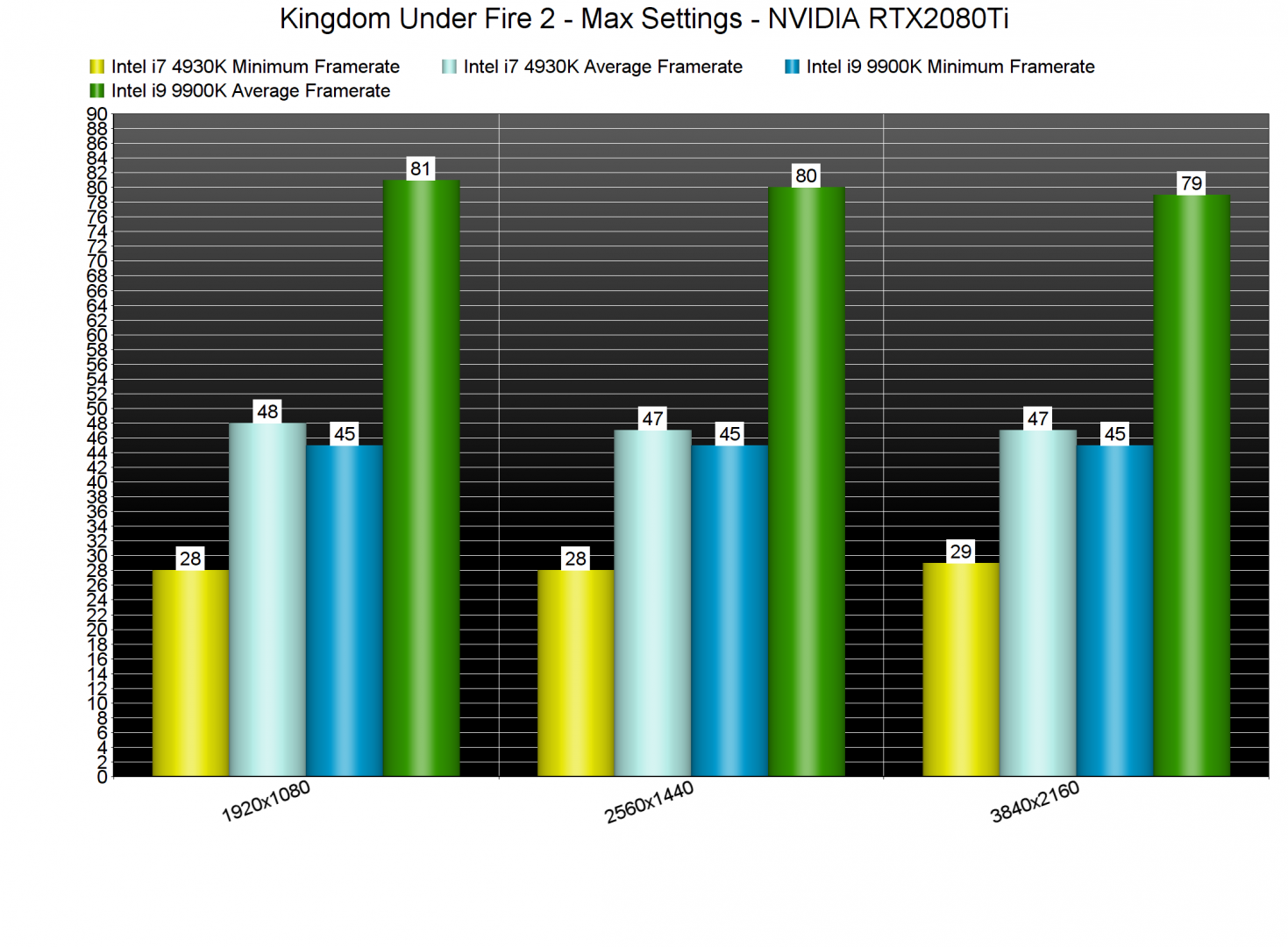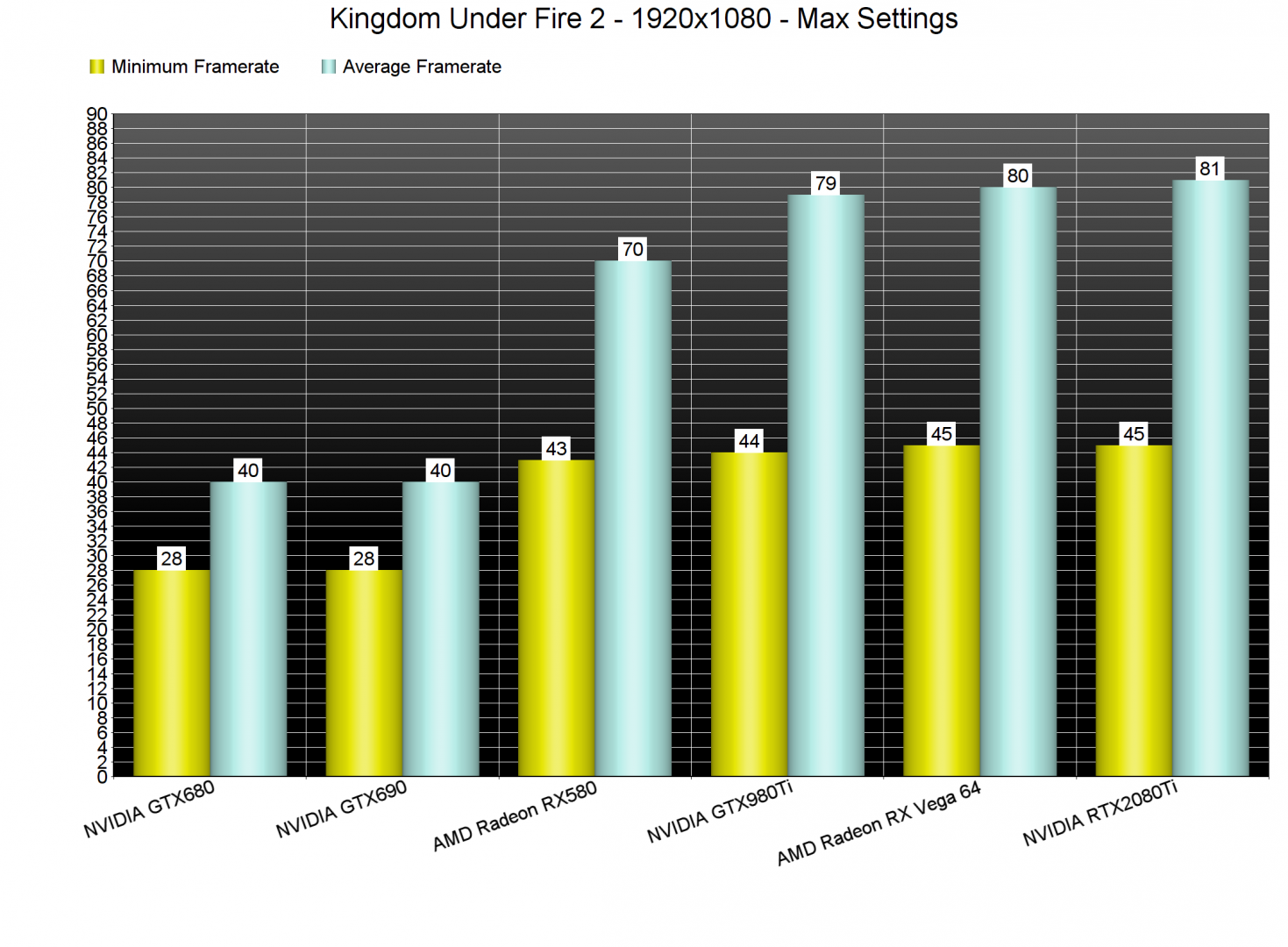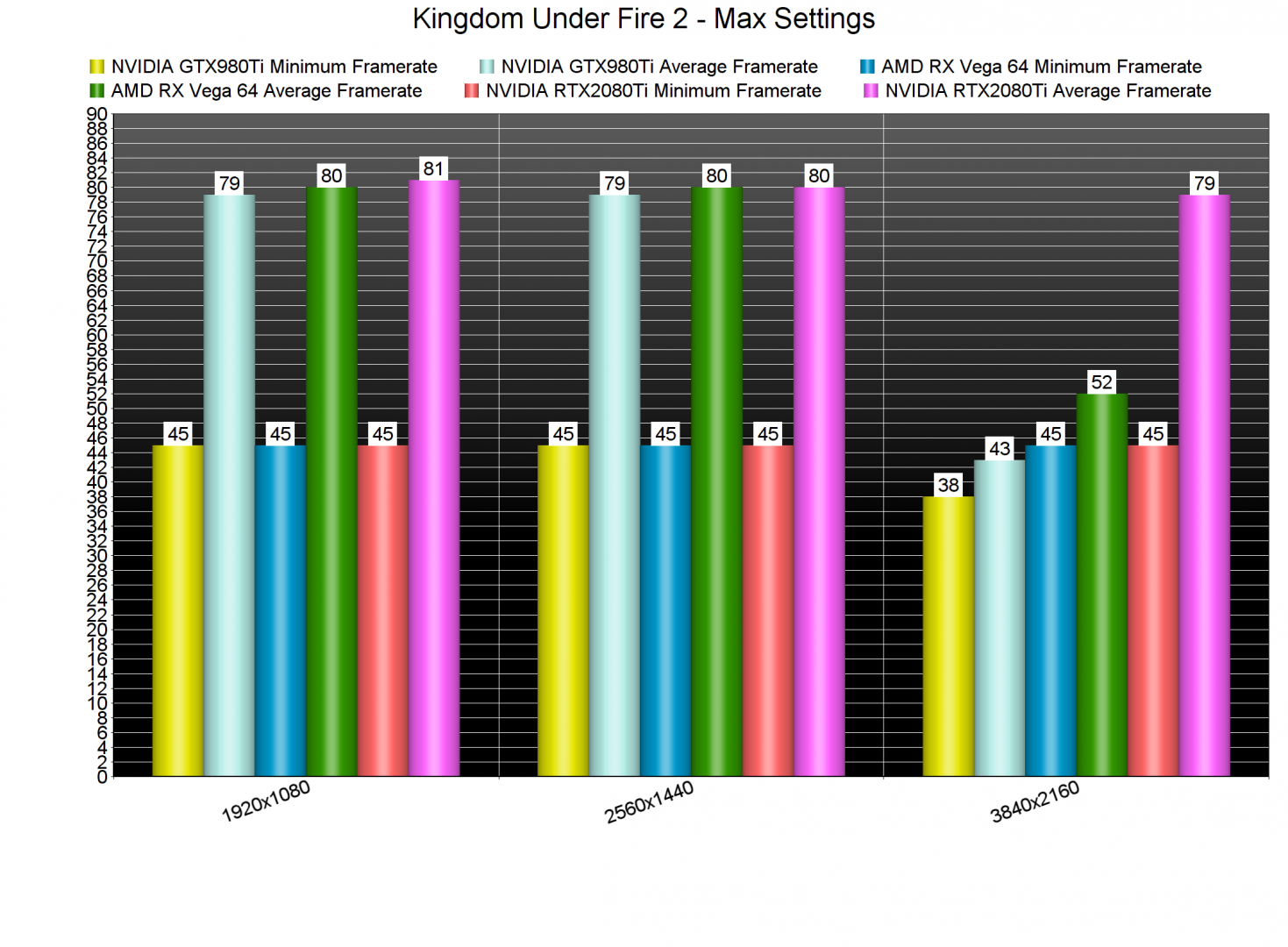After a 12-year development hell, Kingdom Under Fire 2 is finally here with us. Gameforge has provided us with a review code so it’s time to benchmark this game and see how it performs on the PC platform.
For this PC Performance Analysis, we used an Intel i9 9900K with 16GB of DDR4 at 3600Mhz, AMD’s Radeon RX580 and RX Vega 64, NVIDIA’s RTX 2080Ti, GTX980Ti and GTX690. We also used Windows 10 64-bit, the GeForce driver 441.20 and the Radeon Software Adrenalin 2019 Edition 19.11.3 drivers. NVIDIA has not included any SLI profile for this title, meaning that our GTX690 performed similarly to a single GTX680.
Blueside has added a few graphics settings to tweak. PC gamers can adjust the quality of Textures, Terrain, Shaders, Shadows, Post-processing and Anti-aliasing. There are also options for Motion Blur, HDR, Light Scattering, Shallow Focus, SSAO and Shadows.
In case you’re wondering, the game does not come with any built-in benchmark tool. Therefore, we’ve decided to benchmark the first big city battle. Do note that this is a stress test, meaning that other areas of the game will run faster.
Kingdom Under Fire 2 only supports the DX11 API and suffers from optimization issues. In the first city battle, our Intel i9 9900K could not provide a smooth gaming experience at 1080p/Max settings. There were numerous drops to mid 40s, with the GPU being underused. Again, let us remind you that this is a stress test.
In order to find out how the game scales on multiple CPU threads, we simulated a dual-core, a quad-core and a hexa-core CPU. Our simulated dual-core system was dropping to 30fps in some areas during our benchmark scene, and provided an average of 67fps. Without Hyper Threading, the game was unplayable on our dual-core system due to severe stuttering issues.
The game’s optimization issues also greatly affected our Intel i7 4930K system. Our Intel i7 4930K had some drops below 30fps, and was able to push an average of 48fps at 1080p/Max settings. We should also note that none of our CPU cores were maxed out. As such, we can safely assume that these optimization issues are due to the memory frequency limitations. We’ve seen this behavior in the past in some other DX11 games. Blueside could potentially address them via a DX12 or Vulkan patch, though I’m not sure whether it currently has such plans.
Due to these optimization issues, most of our graphics cards under-performed in our GPU benchmark/stress test. Now we did notice performance difference in other areas (like the camp for example). However, one of the key features of Kingdom Under Fire 2 is its huge and epic-scale battles. And, unfortunately, the game will not run smoothly under such scenarios.
Graphics wise, Kingdom Under Fire 2 looks like a last-gen game. There are a lot of low-resolution textures, and most of the particles effects are serviceable. All of the characters lack the features you’d expect from a modern-day title. This obviously does not surprise us as Blueside has been developing this game for over 12 years. Therefore, don’t expect visuals that push the envelope of what MMO games can look like.
In conclusion, Kingdom Under Fire 2 suffers from major optimization issues. Our guess is that these are mainly due to the DX11 API and the overwhelmed amount of game’s draw calls. This is mostly a memory frequency limitation and not a CPU bottleneck. However, it will impact all PC configurations and that’s something that Blueside needs to address. Here is hoping that the team will improve things via some post-launch patches!
John is the founder and Editor in Chief at DSOGaming. He is a PC gaming fan and highly supports the modding and indie communities. Before creating DSOGaming, John worked on numerous gaming websites. While he is a die-hard PC gamer, his gaming roots can be found on consoles. John loved – and still does – the 16-bit consoles, and considers SNES to be one of the best consoles. Still, the PC platform won him over consoles. That was mainly due to 3DFX and its iconic dedicated 3D accelerator graphics card, Voodoo 2. John has also written a higher degree thesis on the “The Evolution of PC graphics cards.”
Contact: Email

